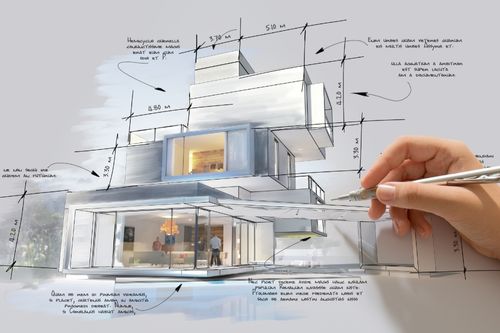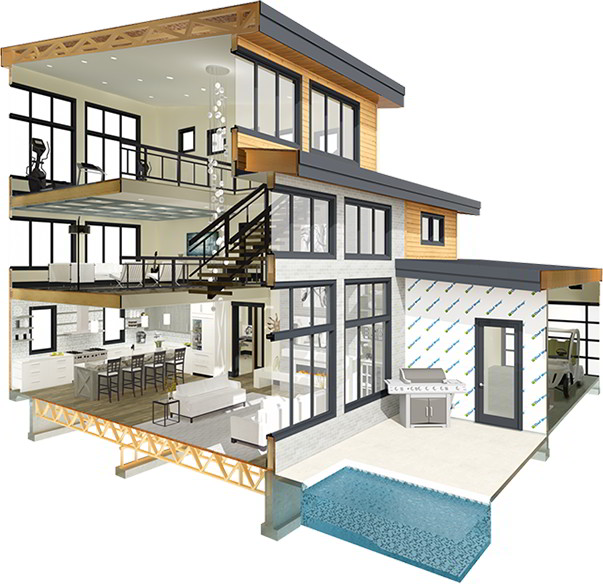Top Reasons to Choose CDA Architects for Your Residential or Commercial Styles
Top Reasons to Choose CDA Architects for Your Residential or Commercial Styles
Blog Article
A Thorough Overview of Architectural Styles and Their Influence on Modern City Planning and Development
Architectural styles have actually long offered as a mirror to the social worths and technological advancements of their time, playing a critical role fit modern city planning and advancement. From the magnificence of Neoclassicism to the practical method of Brutalism, each design has actually presented unique ideas that affect metropolitan looks and capability. As modern obstacles emerge, consisting of sustainability and area needs, understanding these historical frameworks becomes important. The resulting dialogue not just educates future layout techniques however likewise raises pertinent questions concerning the equilibrium between heritage and innovation in our advancing metropolitan landscapes.
Historic Overview of Architectural Styles

As cultures transitioned with the Middle Ages, Gothic style arised, defined by its verticality and intricate detailing, matching the spiritual desires of the age. The Renaissance marked a revival of timeless suitables, merging art and architecture in cutting-edge means that affected subsequent styles throughout Europe.

Today, architectural styles proceed to evolve, driven by globalization and sustainability worries, reflecting a dynamic interaction in between heritage and advancement. This historic overview highlights the significance of design as a mirror of social advancement and as a catalyst for metropolitan growth.
Key Architectural Styles Explained
The variety of building designs reflects the myriad influences that form our built atmosphere, each symbolizing distinctive characteristics and cultural importances. Secret building designs consist of Timeless, Gothic, Baroque, Modernism, and Postmodernism, each representing distinct historical contexts and aesthetic approaches.
Timeless style, rooted in old Greece and Rome, stresses proportion, percentage, and the use of columns (cda architects). In contrast, Gothic architecture, thriving between Ages, is defined by pointed arcs, ribbed vaults, and flying buttresses, producing a spiritual quality in sanctuaries. Baroque style, arising in the 17th century, is noted by majesty, intricate embellishment, and a vibrant interaction of light and darkness
Modernism, which acquired momentum in the early 20th century, prioritizes function over form, utilizing new materials like steel and glass to create minimalist structures. Postmodernism, responding versus the austerity of Innovation, accepts eclecticism and historical reference, often including spirited components and paradox.

Influence On Urban Planning
In forming the advancement of cities, architectural designs significantly affect urban preparation decisions. The option of building style often determines the aesthetic appeals, capability, and general personality of urban atmospheres. For example, modernism, with its focus on minimalism and functionality, motivates open rooms and the combination of modern technology, shaping city designs that focus on efficiency and ease of access. On the other hand, standard designs might stress historical preservation, causing city layouts that maintain cultural heritage and promote pedestrian-friendly atmospheres.
In addition, architectural styles can affect zoning guidelines and land make use of plans. Urban planners should think about the prevailing architectural trends when developing districts, guaranteeing that new advancements integrate with existing frameworks. This factor to consider cultivates natural city landscapes and boosts area identification.
The execution of details building designs can likewise affect socioeconomic elements within a city. For instance, premium contemporary designs may attract affluent homeowners and organizations, bring about gentrification, while extra cost effective real estate services may prioritize sensible and lasting designs to accommodate varied populaces. Eventually, the interplay in between architectural designs and urban preparation creates vibrant cities that reflect both historic context and contemporary demands, shaping the lived experiences more info here of their citizens
Sustainability and Modern Design
Building styles play a crucial role in addressing contemporary difficulties, particularly in the world of sustainability. As urban areas increase and environmental worries magnify, modern-day architecture progressively embraces sustainable style concepts that focus on energy performance, resource conservation, and very little ecological effect.
Contemporary building movements, such as biophilic style and environment-friendly architecture, advocate for frameworks that integrate with their surroundings, using all-natural products and promoting biodiversity. These styles commonly include renewable resource resources, such as photovoltaic panels and wind turbines, to decrease reliance on nonrenewable fuel sources and reduced carbon footprints.
Furthermore, the combination of innovative technologies, such as wise structure systems, improves power monitoring, optimizing resource usage while making sure owner comfort. Innovative water management techniques, including rain harvesting and greywater recycling, more add to sustainable metropolitan atmospheres.
Significantly, sustainability prolongs past ecological problems; it encompasses social and economic dimensions. By promoting neighborhood well-being and promoting inclusivity, modern-day building designs straighten with lasting advancement objectives. Subsequently, the advancement of building techniques proceeds to form durable cities that not just meet the demands of the present yet also protect the future for generations to come.
Area Interaction in Design
Area interaction in design offers as an essential bridge between engineers and the populations they offer, making certain that the developed environment mirrors the requirements and aspirations of its customers. This collective procedure invites community participants to contribute their understandings and preferences, fostering a sense of possession and responsibility towards the spaces they inhabit.
Effective area engagement uses various approaches, such as workshops, surveys, and public discussion forums, to gather varied perspectives. These approaches assist in a two-way discussion, enabling engineers to comprehend neighborhood contexts while empowering citizens to voice their worries and needs. This inclusivity not only boosts the design high quality yet also promotes social equity by resolving the distinct difficulties encountered by marginalized groups.
Additionally, community engagement can cause innovative services that may not arise in a conventional style procedure. By incorporating local understanding and social values, designers can produce rooms that reverberate more deeply with individuals, boosting use and sustainability. Ultimately, prioritizing neighborhood involvement in design processes leads to atmospheres that support social communications, assistance health, and strengthen community ties, thus playing an essential function fit modern-day urban landscapes.
Final Thought
Building Click This Link styles have greatly influenced modern city preparation and advancement, showing developing social and technical contexts. As cities continue to grow and adjust, the continuous dialogue in between building heritage and modern layout concepts will certainly continue to be necessary in producing inclusive, vivid areas that enhance top quality of life and promote social equity.
Report this page